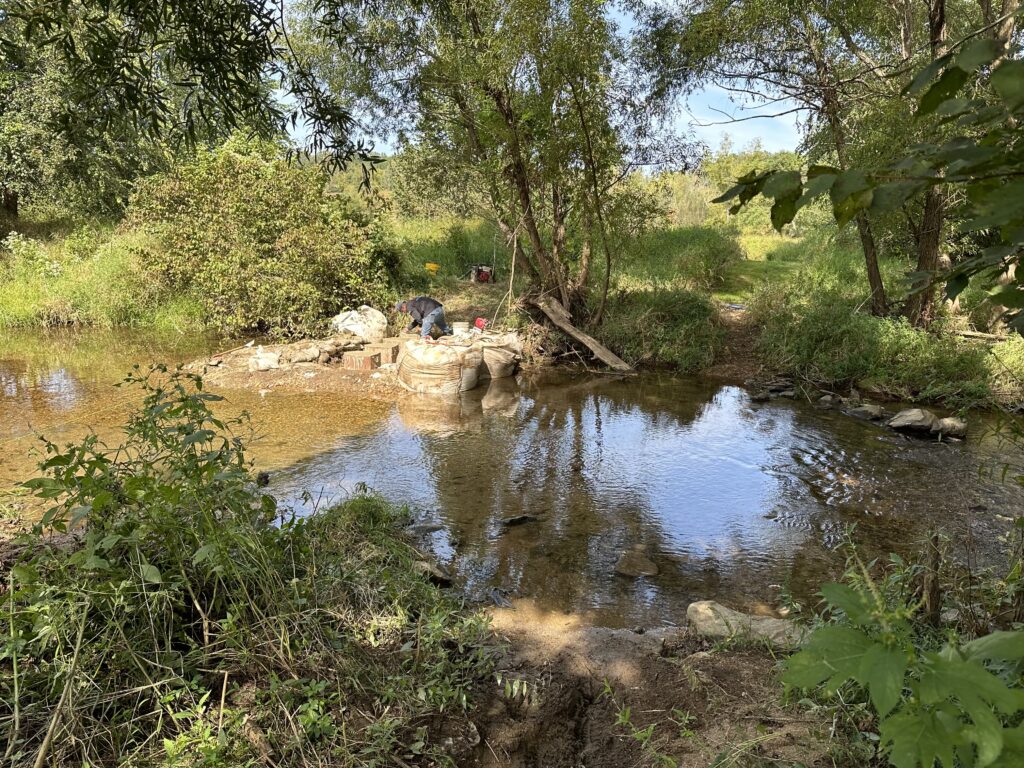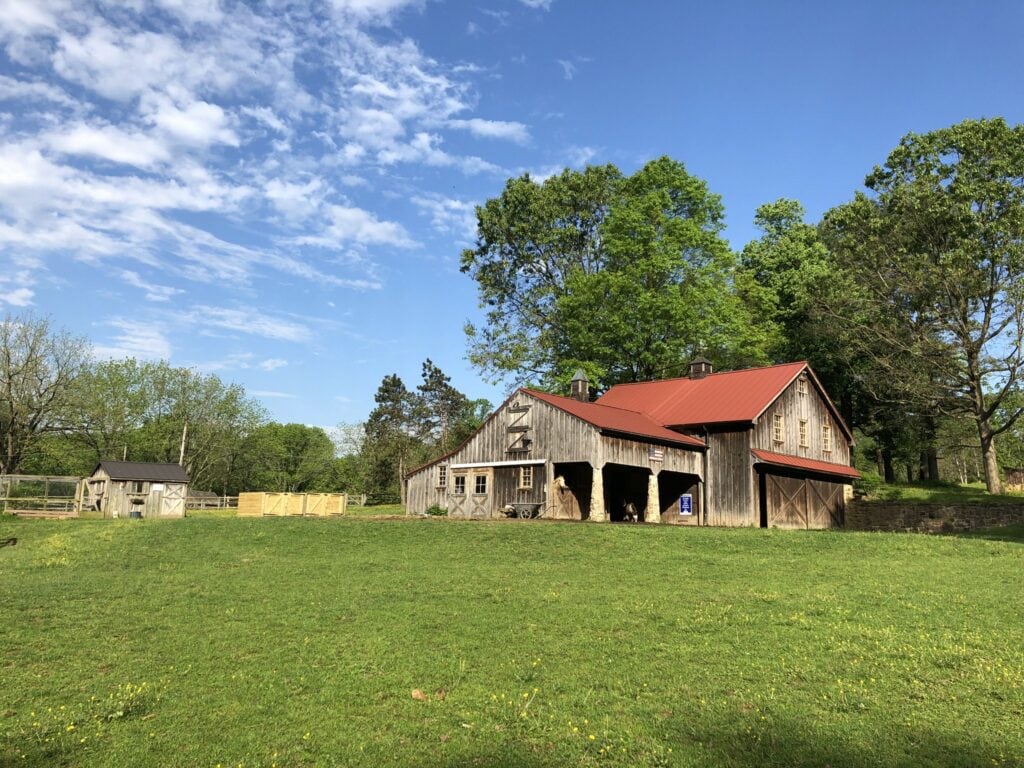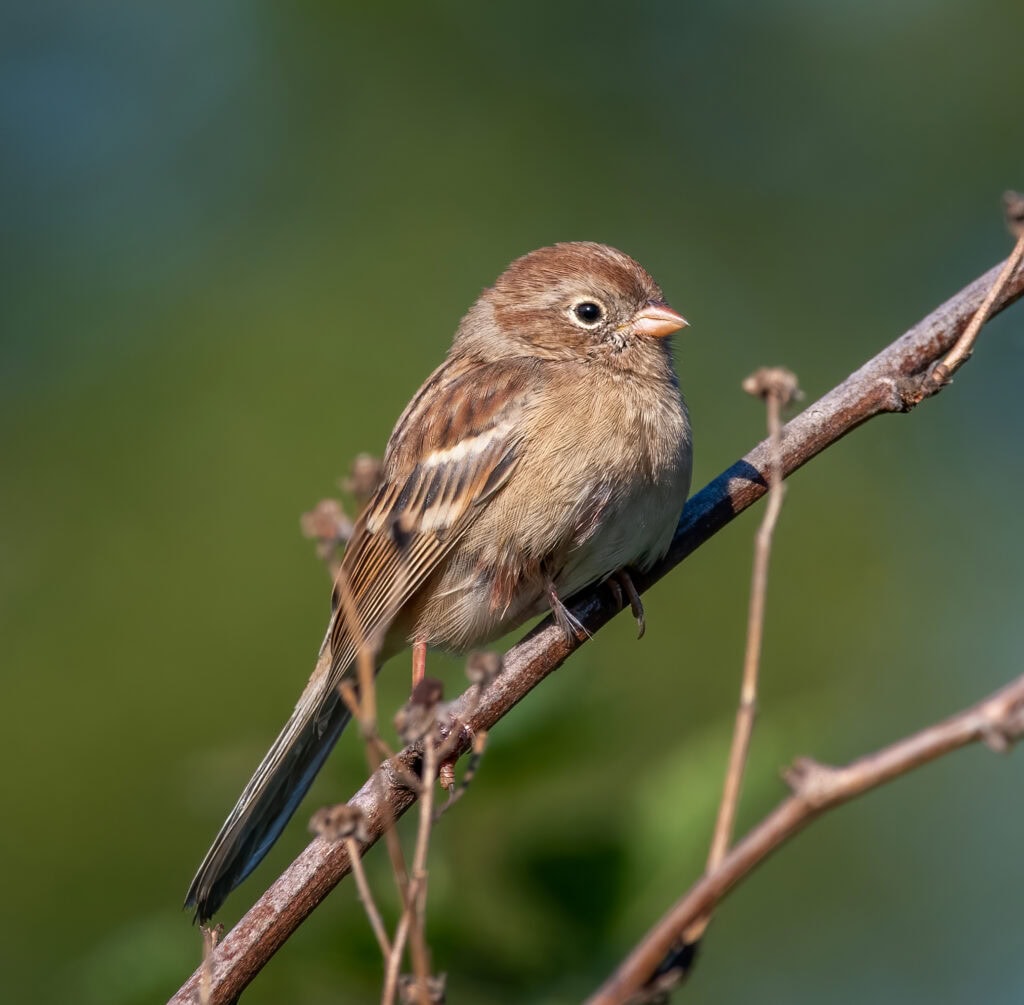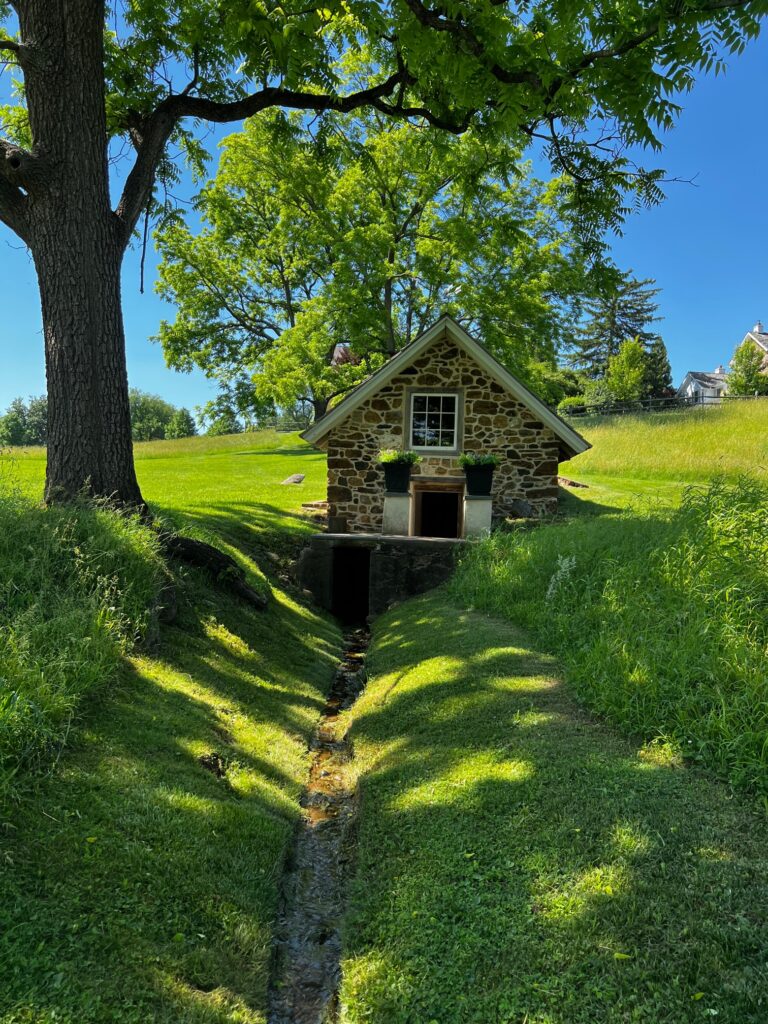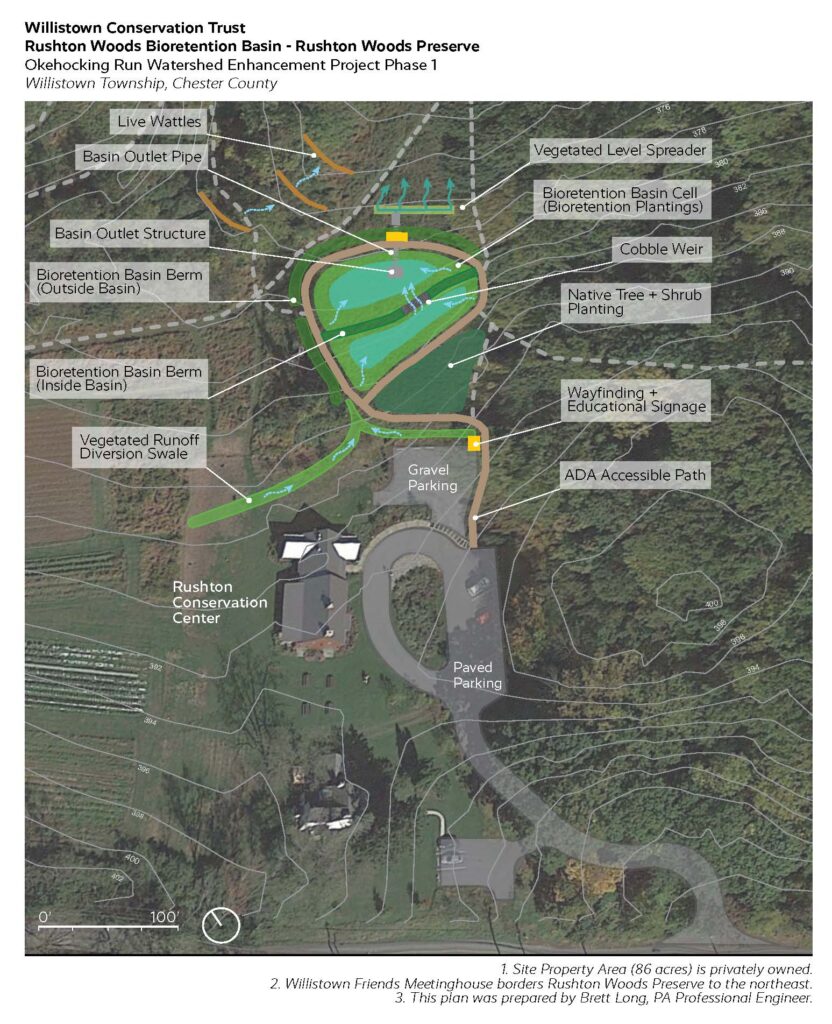Willistown Conservation Trust’s (WCT) Kirkwood Preserve boasts a rich tapestry of wide-open meadows, a meandering creek, wooded slopes, and riparian wetlands. Kestrels and meadowlarks nest and breed there in the late spring, monarchs feed on milkweed in the hot summer months, and our community members can be found wandering the trails. In the last year, Kirkwood Preserve has grown in size from 86 acres to over 100 acres. With the addition of the 12-acre property across Crum Creek along White Horse Road, which features a shrub scrub habitat and rocky wooded slopes, and the 6-acre field across Grubbs Mill Road at the corner of Goshen Road, we are permanently protecting even more habitat for the community to explore.
These additions were made possible through the generous financial support of Willistown Township, Chester County, and the PA Department of Conservation and Natural Resources. In anticipation of the additions to the Preserve, we expanded the parking lot last year to accommodate more visitors. In October we installed a stepping stone crossing over Crum Creek so visitors can safely and dryly cross to the north side of the Preserve. Previously, this area was inaccessible without suffering wet feet, the use of waders, or riding on the back of a horse! If you have visited our Ashbridge Preserve, you are well familiar with our two sets of stone step crossings over Ridley Creek. This new crossing at Kirkwood will be the same style and just as much fun to use! Land Concepts and JK Paving have been great partners and without their hard work and dedication, this project would not have been possible. As many of our neighbors know, this project has been in the works for some time and we are so pleased that it will be completed this month.
In preparation for the new stone step crossing, the Stewardship team has created new trails that make a loop through the addition. The trail passes through a wet meadow, the rocky slopes over Crum Creek, and back through the shrub scrub habitat. Leashed dogs will be permitted on the trail to the stream crossing and on the new section of the Preserve. However, this access will be limited to before and after ground nesting bird season, which is May through July. So from August to April, you will be able to bring your furry friend with you to enjoy this section of the Preserve. If you do plan to bring your dog to Kirkwood, we ask that you respect the leash requirements as dogs off-leash can be problematic for other visitors, equestrians, and birds who call Kirkwood home year-round. Please remember to leave no trace and remove all waste.
On the new 6-acre expansion field across from Kirkwood Preserve, at the corner of Goshen and Grubbs Mill Roads, we plan to install a demonstration of our lawn conversion program with a new wildflower meadow and a loop trail for visitors to enjoy.
